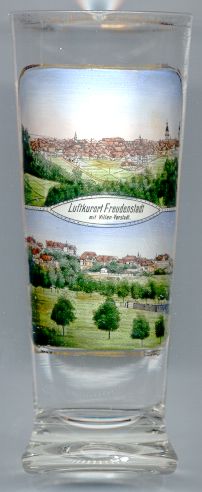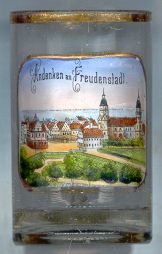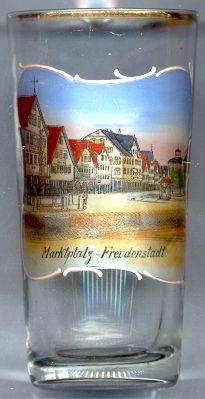

|
| DEUTSCHLAND | GERMANY |
| Bundesland: Baden-Württemberg | |
| Regierungsbezirk: karlsruhe | |
| Landkreis: Freudenstadt |
 Freudenstadt is situated at an elevation of 732 m in the heart of the Schwarzwald (Black Forest) region of Baden-Württemberg.
Freudenstadt is situated at an elevation of 732 m in the heart of the Schwarzwald (Black Forest) region of Baden-Württemberg.
Freudenstadt was founded by Duke Friedrich I of Württemberg in 1601 with the purpose of creating a new residence city. The grond plan
of the town was marked by a vast rectangular square. The sides of the square were lined with 3 rows of houses (similar to the layout of the board game nine men's morris).
The corners of the square were occupied by hooked buildings. Many of the new inhabitants of the town were refugees from Austria who had to leave their
country because of their protestant faith. Only a few years later, in 1608, Duke Friedrich died, and his successors stayed at the old residence in Stuttgart.
The plans for a representative Renaissance palace, which should have marked the centre of the town, were abandoned, the palace never was realized.
Freudenstadt reverted to a role of a provincial town and became a well-known town of nailers and clothiers.
During the late 19th century, Freudenstadt also became known as a climatic spa. During World War II, large parts of the old town were destroyed.
After the war, almost all damages were repaired in an exemplary manner.

The  Protestant town church [right, no. 1647] was built in 1601–1614. Located at one of the corners
of the central square of the town, it was built on a hooked ground-plan; the two naves originally served to seat men and women separately.
The church was almost completely destroyed in 1945, but was meticulously restored in 1948–1950. The baptismal font of around 1100,
the ambo of around 1150 (carved from a single piece of willow-tree wood) and the Gothic crucifix of 1470 are the only pieces of the old church that have survived.
Protestant town church [right, no. 1647] was built in 1601–1614. Located at one of the corners
of the central square of the town, it was built on a hooked ground-plan; the two naves originally served to seat men and women separately.
The church was almost completely destroyed in 1945, but was meticulously restored in 1948–1950. The baptismal font of around 1100,
the ambo of around 1150 (carved from a single piece of willow-tree wood) and the Gothic crucifix of 1470 are the only pieces of the old church that have survived.

The picture on glass no. 1717 [left] shows the
 Market
Market
![[scale]](lineal.jpg)